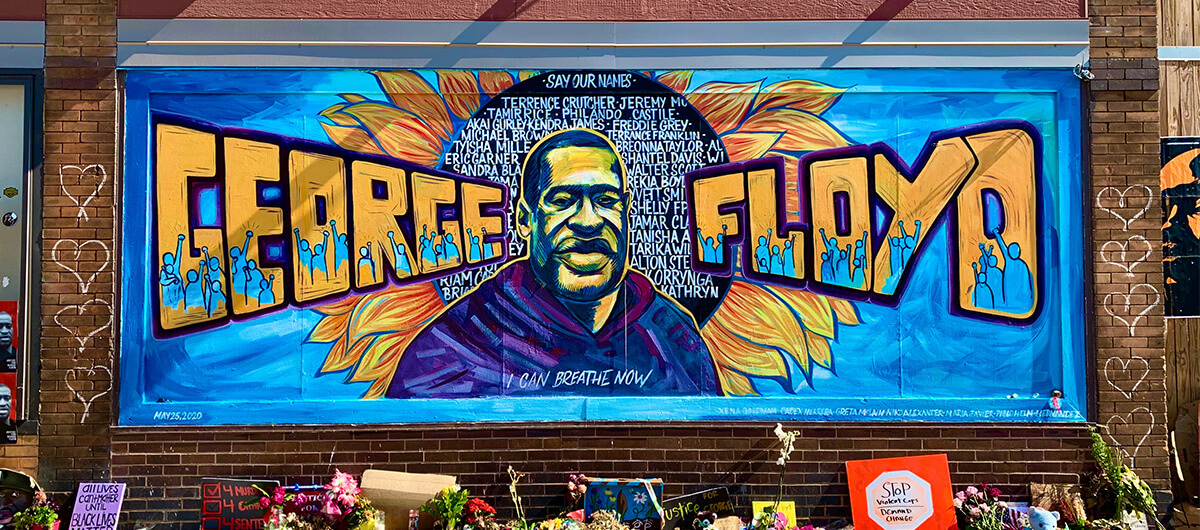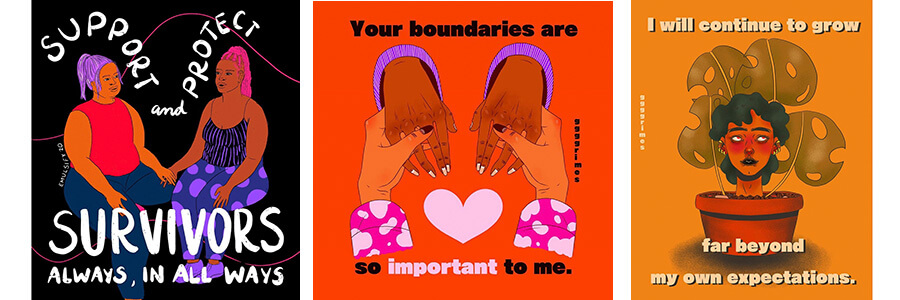
Throughout history, the artist's view has played an essential role in creating movements.
This article was made possible because of the generous support of DAME members. We urgently need your help to keep publishing. Will you contribute just $5 a month to support our journalism?
On Sept. 26, 1960, the first of four TV debates between presidential candidates John F. Kennedy and Richard M. Nixon took place. Many consider this to be the pivotal moment that cemented the central role of TV news in shaping public perceptions in the United States. The dogs of Bull O’Connor attacking the civil rights marchers in Birmingham, Alabama, the landing of Apollo 11 on the moon, and in our own times the twin towers coming down, all only reinforced the continued dominance of television, which mediated and curated what we saw.
Cable TV and streaming services only seemed to increase the dominance of technology (and at times gatekeepers) in shaping or promoting stories that affect all our lives. While the internet and social media, over the last decade have given rise to the possibility that every creator or citizen can make their own news, the untold story, however, is the role that art has played in nurturing change regardless of the transmission medium.
Art is a snapshot of culture in a time period. We’ve seen that art whether street art or mainstream cartoons shape our understanding of movements, particularly those of dissent. This has been true for Occupy Wall Street (2011), Black Lives Matter (2013), the Dakota Pipeline (2016), the Women’s March (2017) through the teacher’s strike that swept through 2018 and 2019 and the continuing climate action. Of course, the protests following George Floyd’s murder have seen an unprecedented explosion of art in the expression of solidarity with the movement seeking justice and equity. As Cornel West so eloquently put it, “It is about inequity, institutional racism and unfettered capitalism.”
The Artist’s View
“What I am hoping to achieve is show my support, find like-minded people and keep the movement going,” says artist Nina Alberg, who focuses her drawings on underprivileged women. “Keep attention focused on the movement, enter dialogues, act and motivate action so we can do things such as affecting policy, changing and creating systems for an equal society.”
“I consider my work protest art and propaganda,” says Brooklyn artist and culture worker M.“When it supports any movement towards the liberation of oppressed peoples by spreading a message, uplifting those leading in different struggles, and creating images of better and freer futures.”
Other artists don’t see themselves as political, even when their works figure prominently in social movements. Taking the time to sit with a piece of artwork, think about its narrative and the messaging behind it, is a slow process.
This is challenging in a digital era, where everything feels rapid, a moment to stand still and take in what is being captured is critical. While the visual is something that may spark a visceral reaction or spur action, it cannot convey everything an artist or movement is trying to say.
Art as a catalyst for change
If art holds up a mirror to the culture, artists are the pivotal agents of cultural change. Whether to inform others of an issue or to persuade them to join in opposition to it, art and its creators have more power than we are willing to admit. Advertising campaigns are one of the few places, where there’s public recognition of the power of art and visual storytelling and dare we say it— propaganda—to effect change.
When we hear the words propaganda, we tend to think of it as lies or manipulation but that in itself is not true. It is also frequently associated with messaging in totalitarian states. The reality is that propaganda is neither confined to undemocratic states nor is it always untrue or bad. Americans across age and race, recognize the “Got Milk” ad with its iconic milk mustache or Apple’s “Think Different” ad featuring striking visuals of unconventional thinkers. Some of this art borders on propaganda. Of course, all of us encounter art that’s intended to influence us, whether in a history textbook in school, street art or graffiti, a sticker or button someone wears and certainly posters at a rally. Amidst this pandemic even if you never leave your house, the internet delivers such imagery to you on your phone.
Similarly, in social movements, art can be used as a tool to create awareness, generate interest and desire for change, and spur action—in other words as propaganda to effect social change. The movement to minimize plastic waste or protect endangered species, both of which are palatable to a large audience, are no less ‘good’ propaganda than the demand for radical political change—be it defunding the police or universal healthcare.

Visual art is a tool to not only question the establishment but to challenge it to be a world imagined and altered. As Upton Sinclair, twentieth-century writer and organizer declared that all art is propaganda. “My art is inherently political because my existence as a Black person under North American white supremacy is inherently political,” says artist Gabriella Grimes. “I’ve always viewed my artwork as a healing experience for me and other queer people, especially Black people and non-Black people of color.“
Joy as Resistance
In this particular moment, when not just the United States but much of the world is responding to the deaths of Black lives, artwork can also be about showcasing joy or normal moments. Adrienne Maree Brown in her book Pleasure Activism: The Politics of Feeling Good writes on the importance of finding hope and love despite our everyday despair. While fighting systemic issues, we’ve been denied joy, a critical part of living life, she asserts. The very act of choosing to center joy in art is an act of resistance to those very systemic issues.
This is even truer for Black women, whose struggles are intersectional—across gender, race, disability and even class.
“Seeing Black women as women who don’t always have to be strong or have care for others or having a ‘supporting role’ to someone else’s main character,” says Nina Alberg. “Embracing the fact that we are more than the preconceived notions about us and that there is not one way of being a Black woman,” says Alberg. By rejecting the myth of neutrality, artists have the power to take control of their surroundings and reimagine it.
As we march, agitate and otherwise engage in activism, it is easy to lose sight of the fact that this is NOT a moment but an ongoing movement. A movement kept alive and nurtured through art—be it street art or poetry, music and movies. We should recognize the role art plays in highlighting the need for demanding and effecting change in society and support artists as creative dissenters who are in the vanguard of change in our societies.
Before you go, we hope you’ll consider supporting DAME’s journalism.
Today, just tiny number of corporations and billionaire owners are in control the news we watch and read. That influence shapes our culture and our understanding of the world. But at DAME, we serve as a counterbalance by doing things differently. We’re reader funded, which means our only agenda is to serve our readers. No both sides, no false equivalencies, no billionaire interests. Just our mission to publish the information and reporting that help you navigate the most complex issues we face.
But to keep publishing, stay independent and paywall free for all, we urgently need more support. During our Spring Membership drive, we hope you’ll join the community helping to build a more equitable media landscape with a monthly membership of just $5.00 per month or one-time gift in any amount.



















































































